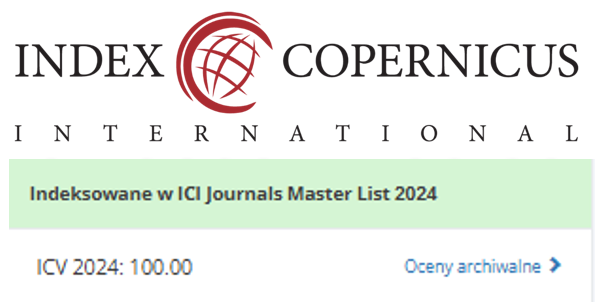Guidelines for Original Research (Qualitative Study)
Articles submitted to the JANH should not exceed 8000 words for the main text, including abstract, tables, and references. But, in some cases, 10,000 words are allowed if needed. A minimum of 5000 words of the main text will be considered as an original research article.
Abstract
(Write a structured abstract, including 4 headings: Background and Purpose, Methods, Results, and Conclusion. The abstract should not be more than 350 words.)
- Background: Provide one or two sentences summarizing the study’s background and its purpose.
- Methods: Describe the research design, population, sampling technique, sample size, inclusion and exclusion criteria, measured variables (independent and dependent), research instruments, procedures, ethical clearance, and statistical tests. Ensure all steps align with COREQ/SRQR standards.
- Results: Summarize the key findings concisely.
- Conclusion: Present the main research conclusions (without restating statistical results) and provide recommendations based on the findings.
- Keywords: 3–6 words or short phrases allowing proper and convenient indexing.
Introduction
- Identify the Research Problem – Clearly define the issue being studied and its significance in the field.
- Provide Rationale & Context – Explain why this study is necessary, including background information and relevant literature.
- Highlight International Relevance – Describe how the topic is relevant beyond local or national contexts.
- Address the Research Gap – Clearly state what has not been studied before and why this study is essential in filling that gap, particularly in nursing or healthcare.
- State the Study Aim(s) – Define the study’s objective, either as a research question, hypothesis, or narrative aim. Example: "The aim of this study was to..."
Methods
Study Design
- State the qualitative research approach used (e.g., phenomenology, grounded theory, ethnography).
- Explain why this design was chosen.
- Describe the research setting and how it may have influenced the findings.
Research Team and Reflexivity
- Provide background information on the researchers (e.g., qualifications, expertise in qualitative research).
- Explain any relationship between researchers and participants before the study began.
- Describe how researcher bias was minimized (e.g., reflexivity journals, peer debriefing).
Participants
- Define inclusion and exclusion criteria.
- Describe how participants were recruited (e.g., voluntary participation, institutional selection).
- Report the number of participants contacted, those who declined, and reasons for refusal (if available).
- Explain whether participants were aware of the study’s aims before agreeing to participate.
- Specify if participants received incentives (e.g., financial compensation, gifts, or none).
Data Collection
- Specify when and where data collection took place.
- Describe how data were collected (e.g., in-depth interviews, focus groups, observations).
- Mention whether interviews were face-to-face, online, or via phone, and state the average duration.
- Provide sample interview questions or an overview of the interview guide.
- Explain whether interviews were recorded and how transcripts were reviewed for accuracy.
- State whether participants were given the opportunity to review and confirm their responses (member checking).
- Explain how data saturation was determined.
Data Analysis
- Describe the analysis method (e.g., thematic analysis, content analysis).
- State whether software (e.g., NVivo, ATLAS.ti) was used for analysis.
- Explain coding procedures and how themes were identified.
- Mention if multiple researchers analyzed the data for validation.
- Describe how disagreements in coding were resolved.
- Provide supporting references for analytic techniques.
Trustworthiness and Rigor
- Outline validation techniques used (e.g., triangulation, peer review, audit trail).
- Explain whether findings were reviewed by participants for credibility.
- Describe any strategies used to ensure dependability, confirmability, and transferability of findings.
Ethical Consideration
- Confirm ethical approval and include the institution’s name and approval number.
- List any additional approvals obtained (e.g., site permissions).
- If ethical approval was not required, provide a justification.
- Describe how participant confidentiality and anonymity were maintained.
- State whether participants provided written or verbal informed consent.
Results
- Describe Participants: Provide a brief description of the actual participants (e.g., demographics, relevant characteristics).
- Use Clear Subheadings: Organize findings into themes, stages, or patterns for clarity.
- Summarize Key Findings: Explain how themes emerged and what each represents, including supporting participant quotes.
- Explain Theme Relationships: Describe how themes interconnect to develop a conceptual or theoretical understanding of the phenomenon.
- Report Multiple Methods: If using different methods (e.g., interviews, observations), present findings from each adequately.
- Use Literature Wisely: Incorporate literature only if it extends your analysis, not just to confirm findings (this can be further discussed in the discussion section).
Discussion
- Link Findings to Literature: Compare your results with previous studies. Identify agreements, contradictions, or gaps without using literature just to support your findings.
- Highlight New Contributions: Explain what new knowledge emerged—whether it refines theories, challenges existing concepts, or provides practical insights.
- Acknowledge Study Limitations: Discuss potential weaknesses, such as sampling constraints, trustworthiness concerns, or transferability of findings.
- Provide Practical Implications: Offer recommendations for research, practice, education, or management, ensuring they align with the study’s limitations.
Conclusion
- Answer the objectives or hypotheses directly without repeating the results in detail.
- Emphasize the study’s contribution to theory, practice, or future research.
- Acknowledge limitations briefly (without further discussion).
- Ensure recommendations align with the findings—if included, integrate them within the same paragraph without creating a separate subsection.
References
- Use reference management software (Mendeley, EndNote, Zotero, etc.) for citations and references following APA 7th Edition.
- Include a minimum of 20 references from reputable articles or journals, published within the last 10 years, with at least 80% from journals.
- Provide the DOI or URL for each cited article.
- Do not use abstracts as references.
- Cite unpublished manuscripts as "unpublished observations" with written permission. Papers accepted but not yet published should be marked as "Forthcoming" with the journal name.
- Avoid citing "personal communication" unless essential. If necessary, include the person's name, date, and obtain written permission.

















